More about Dinosaurs
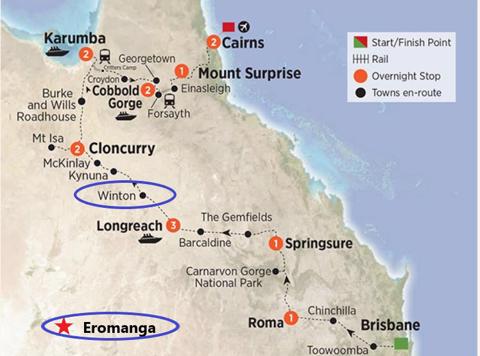

During July, I was fortunate enough to tour outback Queensland for 2 weeks. On the very day subscribers were reading our recent post on dinosaur remains found in Eromanga, near Cooper Creek in South-West Queensland, I was visiting the Australian Age of Dinosaurs Museum in Winton, which is situated further to the north in Queensland. The map above shows my tour itinerary and I have circled Eromanga and Winton.

In that post the linked article from the BBC stated:
Dinosaur bones found by the Mackenzie family in Eromanga, on their property near Cooper Creek in South-West Queensland in 2007 have now been classified as the largest ever found on the continent. The Australotitan cooperensis or "the southern titan", is among the 15 largest dinosaurs found worldwide.
Experts said the titanosaur would have been up to 6.5m (21ft) tall and 30m long, or as long as a basketball court. Palaeontologists had worked over the past decade to identify the dinosaur - distinguishing it from other known species by comparing scans of its bones to those of other sauropods.
Sauropods were plant-eating dinosaurs known for their size. They had small heads, very long necks, long tails and thick, pillar-like legs. These dinosaurs roamed the continent during the Cretaceous Period, about 92-96 million years ago.
Researchers from the Queensland Museum and the Eromanga Natural History Museum said the Australotitan was closely related to three other sauropod species - the Wintonotitan, Diamantinasaurus and Savannasaurus.
The species names are derived from the location where dinosaur remains have been found, ie Wintonotitan, Diamantinasaurus and Savannasaurus, were discovered in Winton, Diamantina and Savanna areas.3
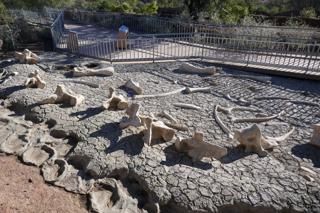
The Australian Age of Dinosaurs Centre, near Winton is set up to display the fossils of these enormous animals that roamed the lush tropical land and inland sea, located here 95 million years ago. The story of their discovery is very similar to that of the Mackenzie family:
In 1999 David Elliott was mustering sheep on Belmont, his property near Winton and discovered the fossilised bone, later identified as part of a giant femur from a Cretaceous sauropod that roamed the area.
In 2005, again while mustering sheep, David discovered a new dinosaur site at Belmont which uncovered the remains of one of Australia’s most complete sauropod skeletons. An incredible total of 17 pallets of fossil bones trapped in fine siltstone rock were recovered and stored. The dinosaur was nicknamed Wade, in honour of Australian Palaeontologist Dr Mary Wade who died at the time of the dig.
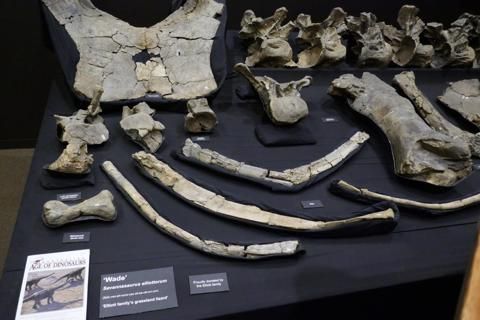
Also, in 2005 a partial sauropod humerus on Elderslie Station (near Winton), led to the recovery of two dinosaur skeletons preserved together, one being a sauropod skeleton (it became trapped in a muddy bank, due to its significant weight) and the other a theropod (theropods have sharp teeth, big claws and could run as fast as a cheetah and this one probably died from a few swift swipes from the tail of the sauropod).
The sauropod was nicknamed Matilda - she’s huge and we saw her enormous thigh bone compared to that of a buffalo which looked small; while the theropod was nicknamed Banjo, both in honour of the Australian poet Andrew Barton Banjo Paterson and his classic poem Waltzing Matilda.


David and his wife, Judy were instrumental in establishing the Australian Age of Dinosaur Museum, where we could see and learn about these massive creatures. We viewed the workshop where painstaking work is carried out to expose the fossils and how volunteers and palaeontologists work the dig sites.
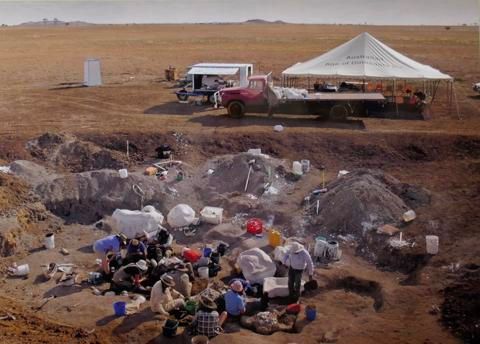




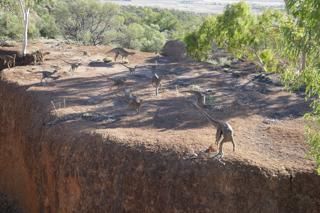
It was hard to imagine the landscape we travelled through in Outback Queensland, now arid, dry and flat, was once a lush rainforest, with an inland sea inhabited by these giant creatures.
Tomorrow I continue the journey and we take a look at lava tubes which resulted from significant volcanic activity which also took place millions of years ago.
And Anne has asked me to extend a very warm welcome to P.S. in India who has joined us as a subscriber to the AnArt4Life blog.
Credits
1. My own photos
2. Guardian.com
3. bbc.com
